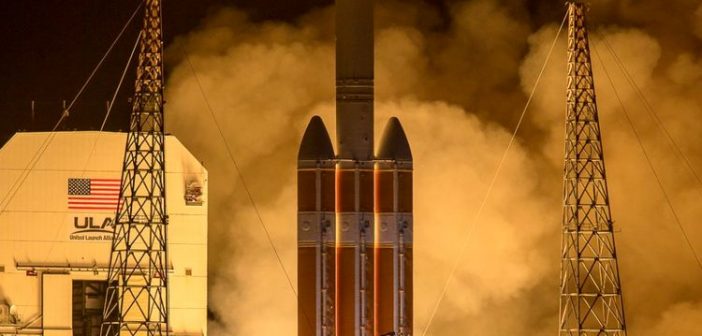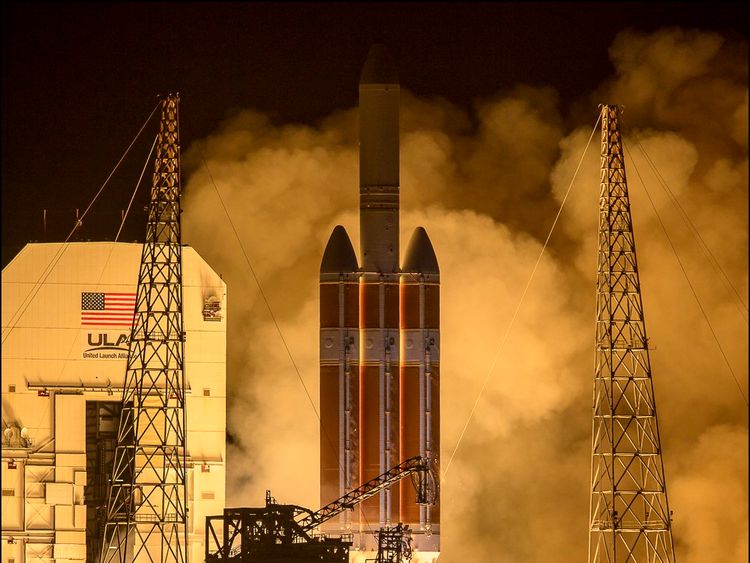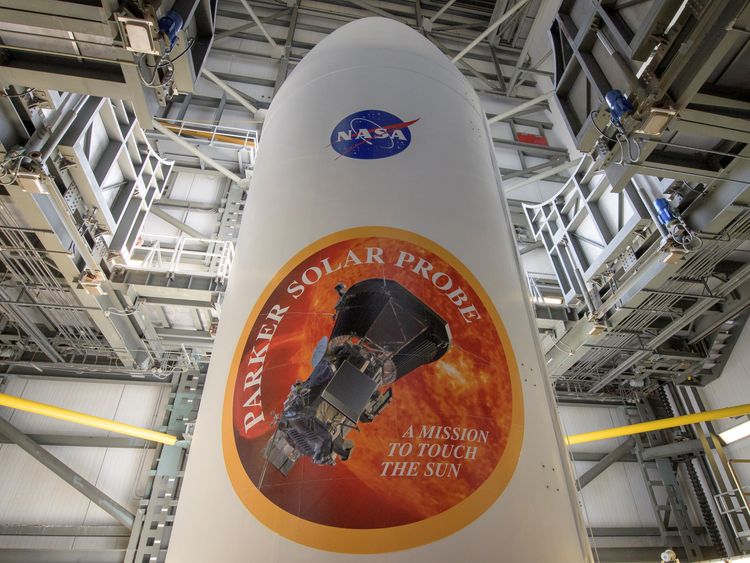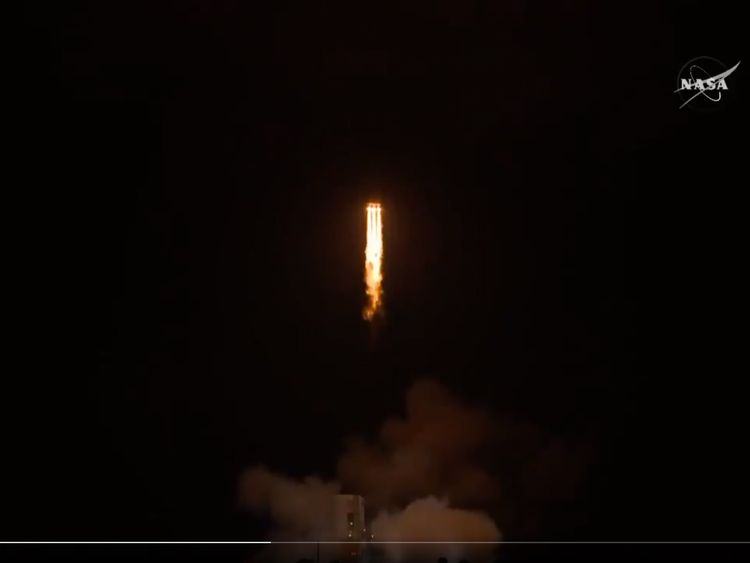A space probe that will “touch the sun” and reach record-breaking speeds has successfully blasted off from Cape Canaveral in Florida.
The Parker Solar Probe lifted off on the Delta IV Heavy rocket a day late, after a dramatic delay on Saturday saw lift-off halted with two minutes to go.
The second attempt on Sunday at 3.31am local time was a success.
Here Comes the Sun by the Beatles blasted out in the control centre moments after the team burst into applause at the successful lift-off.
The probe will get within 3.8 million miles (6 million kilometres) of the sun’s surface after travelling at a record-breaking 430,000 mph.
From Earth, it is 93 million miles to the sun (150 million kilometres), and the Parker probe will be within four percent of that distance.
It will fly straight through the wispy edges of the corona, or outer solar atmosphere, that were visible during last August’s total solar eclipse.
“Fly baby girl, fly!!” project scientist Nicola Fox of Johns Hopkins University said in a tweet right before liftoff. She urged it to “go touch the sun!”
A mission to get this close has been on NASA’s books since 1958.
However the technology to make the spacecraft small and light enough to travel at incredible speeds – while surviving the sun’s punishing environment and the extreme changes in temperature – are only now possible.
:: Probe will fly closer to the sun than any other man-made object
Scientists have devised ways to ensure the automated and unmanned probe does not melt in the extreme heat and radiation.
A revolutionary carbon heat shield will protect it, while the tried-but-true practice of using water inside the craft to cool it down is also being utilised.
Sensors will make certain the heat shield faces the sun at the right times and it will correct itself if it ends up at the wrong angle.
With a communication lag time of 16 minutes each way, the spacecraft must fend for itself at the sun.
It will reach Venus in October and will have its first solar encounter in November.
The probe will make 24 close approaches to the sun over seven years.
Thousands of spectators turned up at the launch site on Sunday, including Eugene Parker, the 91-year-old astrophysicist the spacecraft is named after.
“All I can say is, ‘Wow, here we go.’ We’re in for some learning over the next several years,” said Dr Parker, who proposed the existence of solar wind – a steady, supersonic stream of particles blasting off the sun – 60 years ago.
It is the first time NASA has named a spacecraft after someone still alive.
The $1.5bn (£1.17bn) project is designed to give scientists a better understanding of solar wind and geomagnetic storms that risk wreaking chaos on Earth by knocking out the power grid.
These solar outbursts are poorly understood, but have the potential to wipe out power to millions of people.
Experts say a worst-case scenario could cost up to two trillion dollars in the first year alone and take a decade to fully recover from.
“The Parker Solar Probe will help us do a much better job of predicting when a disturbance in the solar wind could hit Earth,” said Justin Kasper, a project scientist and professor at the University of Michigan.
Knowing more about the solar wind and space storms will also help protect future deep space explorers as they journey toward the Moon or Mars.
It is said the data gathered by the car-sized probe will “revolutionise” our understanding of the star, which has a huge impact on Earth.
From – SkyNews





